  
|
NOW&AFTER'15
OPENOPEN¬Тема «Сейчас&Потом’15” - Пространство, которое мы выбираем
«Сейчас&Потом’15” будет проходить в Государственном музее архитектуры имени А. В. Щусева с 21 апреля по 21 июня 2015 г.
Пространство – это и философская категория, и наша повседневность, и базовое понятие в архитектуре.
Какое пространство интересно художникам?
• Пространство, существующее во взаимосвязи со временем, - хронотоп (от др.-греч. χρόνος, «время» и τόπος, «место»), или пространство как протяженность?
• Микрокосм или космическое пространство?
• Пространство наших обиталищ или необъятные просторы вокруг?
• Личное пространство, в которое мы никого не пускаем, или пространство «другого», в которое не пускают нас?
• Социальное пространство или пространство культуры?
• Виртуальное пространство: жизнь в нем, жизнь вместе с ним или жизнь без него?
• Пространство как пустота или пространство как вместилище?
• Архитектурное пространство или пространство природных ландшафтов?
• Пространство в декартовой системе координат или пространство в системе координат прошлого, настоящего и будущего?
В 2015 году фестиваль проходит в Государственном музее архитектуры имени
А. В. Щусева, в уникальном пространстве флигеля «Руина» - законсервированного в разрушающемся состоянии трехэтажного здания конца 18 века, построенного архитектором М.Ф.Казаковым.
«Пространство, а не камень, - материал архитектуры», писал русский архитектор и педагог Н.А. Ладовский. Именно архитектурное пространство является областью нашего особого интереса в этом году: города и дома, архитектурные ансамбли и поселки, многообразие архитектурных стилей и однообразие массовой застройки, архитектура будущего и руины далекого или недавнего прошлого.
“Now&After’15” theme - A Space We Choose
“Now&After’15” this time will take place at the Shchusev State Museum of Architecture in Moscow from April 21 till June 21, 2015.
Space is at the same time a philosophic category, our everyday reality and a basic concept in architecture.
But what kind of space is more interesting for artists?
A space existing in close relation with time – the Chronotope (from Greek χρόνος, «time» and τόπος, «space») or a space as an expansion?
A microcosm or outer space?
A space of our homes or immense spaces around?
Our personal space that we keep closed for everybody or another person's space that is kept closed for us?
Is it social or cultural space?
Virtual space: living within it, living with it or living without it?
Space as emptiness or space as a receptacle?
Architectural space vs. natural landscapes.
Space in Cartesian system of axes vs. space within the coordinates system of past, present and future?
In year 2015 the festival is being held at the Shchusev State Museum of Architecture, in the unique space of “Ruin” wing – three-storeyed building created in the end of XVIII century by Russian architect M.F.Kazakov and now preserved in its disintegrating condition.
“The real material for architecture is space, not stone” – a Russian architect and Professor N. Ladovsky said. And it’s exactly an architectural space that we put in the center of our attention this year: cities and buildings, architectural ensembles and villages, a variety of architectural styles and a monotony of mass housing development, architecture of the future and the ruins of the remote or recent past.
The topic is A SPACE WE CHOOSE.
The fifth edition of the Festival will take place at the Schusev State Museum of Architecture from April 21 till June 21, 2015.
Space is at the same time a philosophic category, our everyday reality and a basic concept in architecture.
But what kind of space is more interesting for artists?
In year 2015 the festival is being held at the Schusev State Museum of Architecture, in the unique space of “Ruin” wing – three-storeyed building created in the end of XVIII century by Russian architect M.F.Kazakov and now preserved in its disintegrating condition.
“The real material for architecture is space, not stone” – a Russian architect Nikolay Ladovsky said. And it’s exactly an architectural space that we put in the center of our attention this year: cities and buildings, architectural ensembles and villages, a variety of architectural styles and a monotony of mass housing development, architecture of the future and the ruins of the remote or recent past.
Now&After’15 is organized by Media Art Centre Now&After.
Now&After’15 is co-organized by the Schusev State Museum of Architecture.
Now&After director/curator is Marina Fomenko.
NOW&AFTER'15 CATALOGUE

CALL – International Video Art Festival NOW & AFTER’15
The topic is A SPACE WE CHOOSE
SUBMISSION - - http://now-after.org/zayavka.php?o=1
Deadline: January 31, 2015, 17:00 MSK (13:00 GMT)
The fifth edition of the Festival will take place at the Shchusev State Museum of Architecture from April 21 till June 21, 2015 http://muar.ru/ .
Space is at the same time a philosophic category, our everyday reality and a basic concept in architecture.
But what kind of space is more interesting for artists?
A space existing in close relation with time – the Chronotope (from Greek χρόνος, «time» and τόπος, «space») or a space as an expansion?
A microcosm or outer space?
A space of our homes or immense spaces around?
Our personal space that we keep closed for everybody or another person's space that is kept closed for us?
Is it social or cultural space?
Virtual space: living within it, living with it or living without it?
Space as emptiness or space as a receptacle?
Architectural space vs. natural landscapes?
Space in Cartesian system of axes vs. space within the coordinates system of past, present and future?
In year 2015 the festival is being held at the Shchusev State Museum of Architecture, in the unique space of “Ruin” wing – three-storeyed building created in the end of XVIII century by Russian architect M.F.Kazakov and now preserved in its disintegrating condition.
“The real material for architecture is space, not stone” – a Russian architect Nikolay Ladovsky said. And it’s exactly an architectural space that we put in the center of our attention this year: cities and buildings, architectural ensembles and villages, a variety of architectural styles and a monotony of mass housing development, architecture of the future and the ruins of the remote or recent past.
Participation Terms
There is no entry fee.
All rights on videos remain property of authors.
Submitted videos must have been completed after January 1, 2012.
Running time is up to 10 min.
Entry form must be completed online.
Each applicant may send maximum 3 submissions for single-channel videos.
All the films selected for the competition program will be considered by the jury. The authors of the best films will be awarded. The Festival’s Prize Fund is 120,000 rubles.
Please read the participation terms, fill out the online entry form on the Festival’s website and send your work via file sharing.
Contact
now.after.festival@gmail.com
Now&After’15 is organized by Media Art Centre Now&After. Now&After’15 is co-organized by the Shchusev State Museum of Architecture. Now&After director/curator is Marina Fomenko.
CALL – International Video Art Festival NOW & AFTER’15
The topic is A SPACE WE CHOOSE
SUBMISSION - - http://now-after.org/zayavka.php?o=1
Deadline: January 31, 2015, 17:00 MSK (13:00 GMT)
The fifth edition of the Festival will take place at the Shchusev State Museum of Architecture from April 21 till June 21, 2015 http://muar.ru/ .
Space is at the same time a philosophic category, our everyday reality and a basic concept in architecture.
But what kind of space is more interesting for artists?
A space existing in close relation with time – the Chronotope (from Greek χρόνος, «time» and τόπος, «space») or a space as an expansion?
A microcosm or outer space?
A space of our homes or immense spaces around?
Our personal space that we keep closed for everybody or another person's space that is kept closed for us?
Is it social or cultural space?
Virtual space: living within it, living with it or living without it?
Space as emptiness or space as a receptacle?
Architectural space vs. natural landscapes?
Space in Cartesian system of axes vs. space within the coordinates system of past, present and future?
In year 2015 the festival is being held at the Shchusev State Museum of Architecture, in the unique space of “Ruin” wing – three-storeyed building created in the end of XVIII century by Russian architect M.F.Kazakov and now preserved in its disintegrating condition.
“The real material for architecture is space, not stone” – a Russian architect Nikolay Ladovsky said. And it’s exactly an architectural space that we put in the center of our attention this year: cities and buildings, architectural ensembles and villages, a variety of architectural styles and a monotony of mass housing development, architecture of the future and the ruins of the remote or recent past.
Participation Terms
There is no entry fee.
All rights on videos remain property of authors.
Submitted videos must have been completed after January 1, 2012.
Running time is up to 10 min.
Entry form must be completed online.
Each applicant may send maximum 3 submissions for single-channel videos.
All the films selected for the competition program will be considered by the jury. The authors of the best films will be awarded. The Festival’s Prize Fund is 120,000 rubles.
Please read the participation terms, fill out the online entry form on the Festival’s website and send your work via file sharing.
Contact
now.after.festival@gmail.com
Now&After’15 is organized by Media Art Centre Now&After. Now&After’15 is co-organized by the Shchusev State Museum of Architecture. Now&After director/curator is Marina Fomenko.
Winners
I place
II place
III place
Best Russian Video
Honorary Jury Mention Liva Dudareva, Eduardo Cassina, Stop Over City, Latvia, 8:42, 2014
Nastya Kuzmina, Nadya Grishina, a Fuss, Russia, 5:48, 2014
Mairead McClean, No More, UK, 14:53, 2013
Participants
COMPETITIONCOMPETITION PROGRAM
COMPETITION PROGRAM
1. Johanna Adebäck, Physical Exploration - Chair, Sweden, 06:11, 2012

“Physical Exploration — Chair” is part of an ongoing research on the relationship between the human subject and the physical environment. It’s based on the idea that we and our surrounding constantly create constraints as well as possibilities for each other. That we shape the objects and spaces we use and surround ourselves with, simultaneously as we are shaped by them. In “Physical Exploration — Chair” I examine the relationship between my body and an everyday object — the chair. In a slow pace the chair and I search for positions in which we can challenge our everyday co-existence.
2. Inbal Shirin Anlen, War Dance, Israel, 8:50, 2014
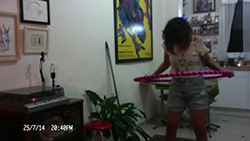
During the latest Israel-Gaza armed conflict this summer, I documented myself dancing with a hula hoop, outside my “Merkhav Mugan” (in Hebrew: missile protected space) as the sirens wailed in the background. With a little over a minute to take cover, I attempted to capture the first thirty seconds of each alarm, while emphasizing the absurdity and helplessness of the situation. Being in Tel Aviv, where the chances of getting hurt are smaller than in other parts of Israel (not to mention Gaza), adds to this sense of general meaninglessness. The very basic yearn for tranquility and the celebration of life appear to be fantastic and surreal in the absurd reality of Israel. And, so, I danced.
3. claRa apaRicio yoldi, RAM_City (1000 screens), UK, 6:20, 2014
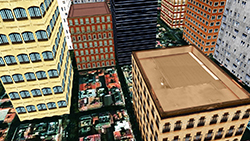
Video based on a text by José Luis Brea: RAM_city (1000 screens), part of the book Cultura RAM. Mutations of culture in the age of electronic distribution. It is the transition from a city with “Read-only memory” (ROM) to a city with “Random-access memory”: RAM_city. From a “file based memory” to a “network memory”. In this new city there are no monuments or heroes to commemorate. Here, nothing crystallizes as a fixed memory. Culture is not marked by tradition and inheritance rules. In RAM_city everything is disagreement, there is nothing to be concluded as real. The formation of the imaginary is a continuous and open negotiation among the units of work, performance and exchange. In the words of Brea: "There is no other “sociality” than this one: occasion and leakage, drift and flow, meeting and rapid dispersion — continuous Big Bang".
4. Liva Dudareva, Eduardo Cassina, Latvia, Stop Over City, 8:42, 2014
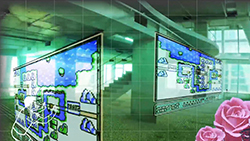
The film “Stop Over City” captures the future changes of Moscow International Business Centre, Moscow City for friends. Set in 2041, this financial district has become part of Moscow’s International airport, the world’s first mega-airport: Sheremetyevo and Domodedovo have been connected with a high speed train, an 87 km long spine that beams through the city, stopping over at terminal SOC, Stop Over City (formerly known as Moscow City), a business hub that falls within the international transit area. Stop Over City is a non-place that physically embodies that connection.
5. Marco Fedele di Catrano, Untitled, Switzerland, 5:30, 2014
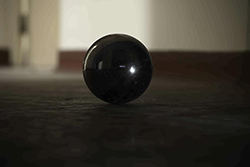
The mirror sphere that never stops to roll, contains in itself the entire world that is in front of it. Moving in formalized ascetic space it opens new topography of life beyond its own rotation. Virtual volume of information that appears in the mirror image in this sphere offers us to live through the binary system of being where the “Yes” transfers into specular “No”, but specular “No” displaces with its great illusion questionable “Yes”. Vitaly Patsukov
6. Luca Ferri, Giulia Vallicelli, Dario Agazzi , Ridotto Mattioni, Italy, 10:00, 2014
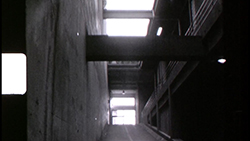
Ridotto Mattioni is a circular urban symphony, flanked by the original music score "16/49 (rondeau) per organo sintetico 2014" by the composer Dario Agazzi. Using black and white super8 film, the directors intend to investigate the work of the architect Luigi Mattioni, a leading figure in the transformation of Milan after World War II. Ridotto Mattioni approaches both architectural and musical elements in a recursive way, retracing the signs of change of a city that is defining its identity once again.
7. Francesca Fini, P. I. G. #1, Italy, 9:00, 2013
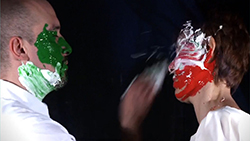
The concept of the performance is the irrational and methodical violence of everyday life that becomes ritual like all forms of household violence. At the end of the performance the man and the woman, the laboratory mice, take off their dirty clothes and nail them to the canvas with a staple gun. Serial violence becomes serialized art. The mundane routine of evil becomes art routine and each time the performance is repeated will produce a new canvas, to be archived and numbered chronologically.
8. Meirav Heiman , Living Room, Kitchen, Bedroom, Children’s Room, Israel, 6:10, 2013
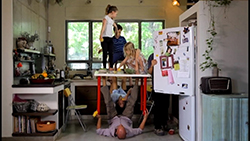
Home economics, the complex management of family life and its inherent power struggles are at the essence of this video art. Borrowing the psychological concept of the family functioning as one body struggling to maintain balance, the use of highly trained acrobalance dancers in this work implies to the near impossibility of this struggle for ordinary people. Everyday domestic situations, like having dinner or watching TV, are used to express the acrobatic challenges required in order to maintain a proper family life within the confined and intimate space of the home. The exaggeratedly staged scenes in the video, dealing with intense questions of intimacy, conflict and sexuality within the family unit, create a sense of defamiliarization of everyday situations that usually go unnoticed. This defamiliarization points out the difficulty and inability to prepare for the complex experience of day-to-day domestic life.
9. Julia Kurek, Lucha Libre – Free Fight, Poland, 7:49, 2015
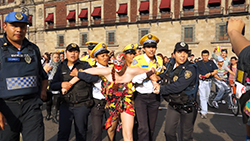
Social and cultural space. In Mexico Lucha Libre fight are part of the cultural identity of the country. Fighting often is a grotesque, sometimes end up outside the ring. The impetus for the implementation of the performance Lucha Libre in front of the Presidential Palace was the analysis of the political situation in Mexico. September 26, 2014 43 students who manifested against the reform of the education system were abducted. Performance, which I did in front of the Presidential Palace took place a day later. Two weeks after kidnapping students bodies were found burned in mass graves. My action was an expression of solidarity with the part of the society, which opposes the situation.
10. Nastya Kuzmina, Nadya Grishina, a Fuss, Russia, 5:48, 2014
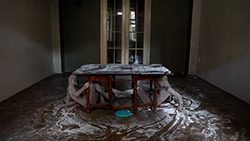
In this work we turned to the theatrical production as a tool for creating a minimalistic performance. It reveals two phases of relations between individuals who share a common goal — to posess a unique substance. Protagonists of the "Fuss" appear as mechanical conductors that help to erase memories in an old apartment, where a new life is about to begin and repeat.
11. Vadim Leukhin, Mixed Martial Arts, Russia, 2:38, 2014
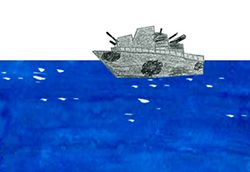
Video animation is based on children's drawings. The pictures were selected in accordance to a special task, i.e. to learn how children understand such concepts as “war”, “politics” and “modern world”.
12. Lucie Libotte, Dust Matter(s)2, UK , 2:45, 2014
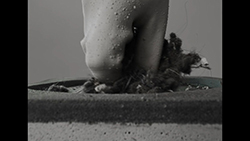
DUST MATTER(s) is a case study that examines a discarded matter “domestic dust”. My research led me to pursue a more “social” research; by looking into people’s waste, I turned my work as a designer toward the intimacy, the ‘unwanted’. Each piece is made of a unique material that belongs to one person’s home or environment. I invite people to realize that dust is a reflection of our daily use of an environment, whether natural or built, a material projection of our passage and the traces we leave behind. Each piece offers an element of surprise, derived from the transformation of unwanted grey particles into colours, textures and structures. In fact, the visual result is unpredictable.
13. Mairead McClean, UK, No More, 14:53, 2013
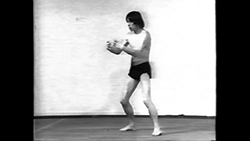
Images and sounds from the 1970’s are re-heard and re-viewed through computer generated tele-visual transmission signals. Re-appropriated Foley is layered and inter-cut with footage from Jerzy Grotowski's Polish Laboratory Theatre training film. The image sequence open and close like the moving aperture of a camera trying to find the correct exposure. Is there logic or rational to what the audience sees in relation to what it hears? Does the brain make its own associations in order to create meaning? How important is reflection in order to understand why and how things happen?
Time space, political personal, open close — No More.
14. Anuk Miladinovic, Access, Switzerland, 9:17, 2012
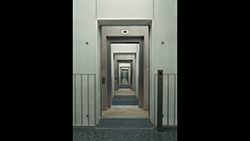
7 men waiting for an elevator. A woman cleaning. A teenager and a man travel in the metro. An older man picks up the man from the metro station. Spaces change and interlace. Elevator doors open and close.
15. Lisa Morozova, Motherland, Russia, 3:54, 2014
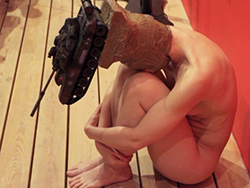
“Motherland”, performance. I am naked. A radio-controlled toy-tank is attached to my head, so i cannot see and hear. I give the remote control to the viewers. Under their command the tank from time to time opens fire. Each shot makes my body shake and shiver, causes a pain in my head. I am trying to stop shooting. I recognize my helplessness.
16. Carlotta Piccinini,Luigi Mastandrea,Enaction, Italy, 10:00, 2013
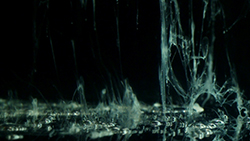
Enaction is an audiovisual narration, the staging of an organic form that produces its own world through the perception of his own body. Enaction’s sequencing of selected colors represents the different ages of the form, which regenerates constantly. The fragments of liquid bodies narrate the form’s life experience; its own changes define the sound field and become sound themselves - the result of long field recordings, recordings of organ, digital synthesis. Enaction is an experimental project tending to rediscover and re-act the beginnings of motion graphics, adapting it to the technology models produced by the digital revolution.
17. Ester Pérez de Eulate, Levels of Unhappiness, Spain, 1:00, 2014

These dimensions describe attitudes expected of the "perfect woman" in patriarchal society — such as submission, obedience, servitude... Attitudes that make woman completely unhappy. The pain of these impositions is being expressed through a bloodstain that grows until it covers the entire map. So the pain might cover all our existence if we're not facing the cause of it.
18. Shawnette Poe, Barszcz z Uszkami, Germany, 4:23, 2014
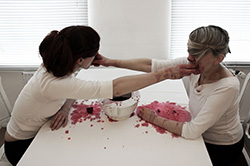
Barszcz z Uszkami is a traditional Polish Christmas dish red beet soup with a type of ravioli filled with mushrooms. Two women, the artist and her mother, sit face to face at a table. The center of the action focuses on reciprocal feed, a symbol of care taking, protection: the relation is evidently based on trust, care results however in a repetitive failure. The mirrored act of excessive feeding and failing recalls imitation of parental errors and issues of unintentional compensation. It draws moreover a life circle: the mother’s first basic act towards her child at the beginning of its life, often reversed towards the end of hers. In spite of or probably due to their deeply rooted emotional bond, naturally fail to see/understand each other.
19. David Přílučík, Present Perfect Continuous, Czech Republic, 7:00, 2015

We use the Present Perfect Continuous to show that something started in the past and has continued up until now.We use the present perfect continuous when the focus is on an activity that is unfinished.
20. Roberto Santaguida, Goran, Canada, 10:00, 2014
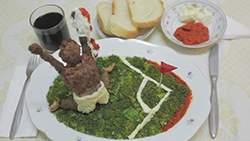
"Goran" takes an intimate look at the despair and frustration, the hope and pride in achievement as it is constructed by Goran Gostojic of Novi Sad.
21. Maryam Tafakory, Taklif, UK, 9:00, 2014
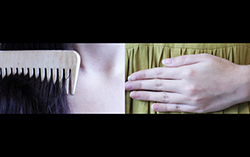
Taklif is an abstract yet lyrical story of religion as forced into a girl's life, seen from the innocent perspective of the child. It conveys the violence of early marriage and rites of passage, as faced by pre-pubescent girls in an Islamic context.
22. Dasha Vlasova, Leave Me Alone, Russia, 2:22, 2013
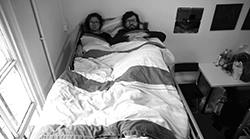
This video is made at the interfase of cinema and videoart. This video explores relationships between space and people, people and people.
23. Tushar Waghela, The Home, India, 4:54, 2014

The home where we live is also a home to billions of living beings. They might remain out of our vision, their sounds and signs continuously register their presence before us. We believe ourselves to be the owner of our apartments and push them away from our kitchen and courtyard. Barely do we realise that much before we came into existence this planet has been their domicile for billions of years — our apartments are just a tiny corner of their vast habitat.
24. Susanne Wiegner, Kafka’s Room, Germany, 3:30, 2012
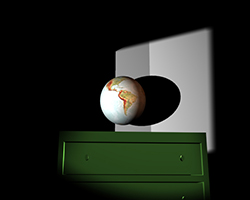
Cinematic transformation of a text passage of Kafka's diary of the 4th of October 1911, where he describes his room in the dark in a very detailed, almost scientific manner. The camera takes the position of the observer in the room and catches with minimal movements and approaches. This film resumes a consideration of Kafka about the Kaiserpanorama in Friedland: "The pictures alive, as in cinematography, for they afford a gaze into the quiet of reality. The cinematograph gives the spectators the disquiet of their movement, the quiet of reality seems more important." (Reisetagebuch Friedländer Reise, 1911)
25. Przemek Wegrzyn, Security Measures, Poland, 5:55, 2014
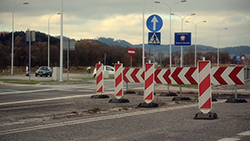
The work is inspired by U.S. Embassy warning messages I received accidentally over last few years. They contained information about potential safety problems for American citizens residing in Poland. Exaggerating these problems, they had nothing in common with the real situation in the country. They seemed to me an example of ignorance and they gave me a slight feeling of surrealism. Following them I visited various border crossing points trying to find visual impression as if foreigner incoming from abroad. Borders: lifeless, boring and similar to one another are odd and artificial. Within these borders the messages create another safer and more secure borders.
26. Sylvia Winkler, Stephan Koeper, Smart Songdo Song, Germany, 5:30, 2014
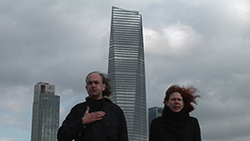
Built on privatized land, managed by a single company, financed by multinational investors: Cities are becoming a market-oriented product, traded like a commodity. Nevertheless, individuals find smart ways to deal with those concrete real(i)ties. In New Songdo City, one of South Korea’s Free Economic Zones, we reflect on this development along a settled hard rock melody.
27. Zaoli Zhong, We Are Walking on the Same Great Road, USA, 12:08, 2014
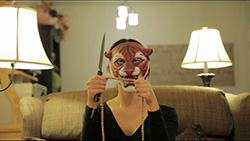
This is a short video dance that compares the lives of two generations in China. It’s based on my grandfather’s diary written in a particular political context in 1960s and on my experience of living in 21st century. I was engaged by the questions of how individuals are shaped (or deformed) by their social environments, how historical forces impinge on people's lives, how class, wealth, and gender help to determine people's fates. Whether we are happier than the old generation. I combined reading, dancing and performance following the content of the diary to present my understanding of the history and my life in the progress of experiencing the diary.
NON-COMPETITION PROGRAM
1. Kirill Adibekov, YA NE GO, Russia, 4:02, 2014
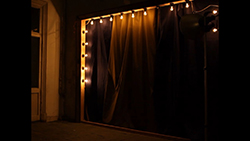
Voice improvisation based on a fragment of Yuri Olesha's diary. Chistye prudy (*literally – «clear ponds») — Dirty gallery. Visual poetry experience.
2. Natalia Alexander, Decided to Live Together. Requiem for Ideality, Russia, 2:25, 2014
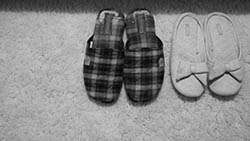
Decided to live together. Requiem for ideality.
3. Antonina Baever, Dmitry Venkov, Not-a-Time, Russia, 9:20, 2014
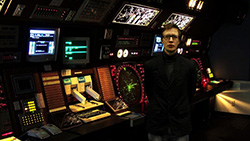
Television as a mean of mass disinformation is used by the authors to present a few satirical scenarios of the future. In "NoTime" TV program the presenter sums up the results of the second half of the XXI century and reminds the audience of the crucial events in the sphere of contemporary art. The main invention of the future is a "hang-over pill" that could dip a person into the existential horror of emptiness and loneliness, while artists' unions will be held under the aegis of the Ministry of Defence. “NoTime” TV program is at the same time a classic dystopia, and a parody of the gloomy howlings of experts and futurologists.
4. Leon Eixenberger, Geometric Love (Glass Opposite), Germany, 9:44, 2014
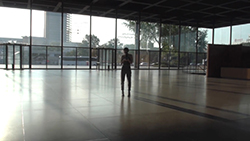
Two bodies in a choreography of image-making. There is a spectator and then there is you. As the sun faded, all that stayed was a silhouette. A typology, like an archive containing material relating exclusively to its own construction. I spent half a decade on the other side of the Atlantic.
No, the other side.
I thought a lot about how openness should remove borders between us, but in reality what we, you and I want, is borders removed between us. NAFTA and the EU. A space within me another upon me. Circling around us circling around. Text by Milan Ther Dancers: Xica Lisboa, Anna McDowell. Location: Neue Nationalgalerie Berlin 2014.
5. Marina Fomenko, Depot (Adaptation), Russia, 8:45, 2014

Circular locomotive depot of the Nikolayev Railway that was built in Moscow in the middle of the 19th century has undergone many changes over of the years. After decades of corrosive intrusion of modernity the depot has been reconstructed. Formally, the Depot building survived, but its circular structure is destroyed and the historical appearance could not be restored. The Depot adapts to changing conditions by assuming the defined visage through which ancient ruins show as a reminder that time and memory are imperishable. The destructive movement has been gradually absorbed by immemorial ruins’ stillness.
6. Olya Gerner, Toy Blocks Game, Russia, 2:26, 2015
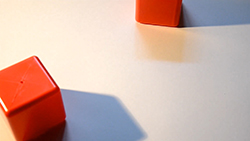
The camera captures a small piece of space, its three-dimensionality becomes obvious only when other objects appear. The space is slowly filling with hollow three-dimensional figures. Some of them linger, others fly away, dissappearing from the field of view. "Toy blocks game" is an attempt to show the chaotic nature of objects within a certain space. Each of these objects could be a single space itself, and as if directed by some invisible forse, they form more and more new variations.
7. Daniella Gomes Birchal de Moura, Psychomagical Act, Brazil / France, 9:40, 2014
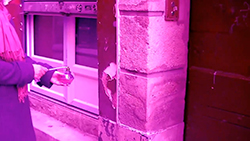
After a Tarot reading, I was asked to make a "psychomagical act": I should scatter fresh drops of my urine in my favorite places in Paris and in the four corners of my house to mark my emotional territory.
8. Anaida Karakashian, Russia, Culture - Shmulture, 2:50, 2014
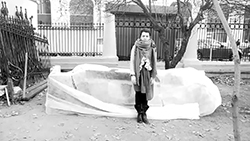
Nonsense, Cuture-Shmulture. City monuments and buildings around us are being hided one by one under anonymous fabric, under a net, under excuse. And not all of them “return”. Some disappear forever, others stay under reconstruction for such a long time that people forget how did they look like before and start to perceive them merely as plains fluttering in the wind amongst other buildings. So lets cover with this fabric everything that surrounds us: houses, cars, trees, trash containers and even the ground we walk on. Lets cover it all and see what happens.
9. Nina Lassila, To the Audience, Belgium, 5:37, 2014
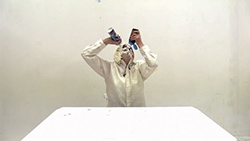
A person dressed in white in a white space gives the audience instructions in how to make a meditative calm performance. She also describes other possible outcomes of a hypothetic performance work and keeps on negotiating whether she could stay calm or not. After a while the piece turns into a reflection of art in itself, it's possible audiences and whether we should care at all.
10. Svyatoslav Ponomarev, Alexander Ponomarev, Ruins of the Future, 34:00, 2015

The author recreates the atmosphere of decayed ZIL factory — an area of currently abandoned and falling to pieces enormous industrial production, that once used to provide jobs for tens of thousands of people. There's nothing left — there is a motion stopped at the absolute zero point, covered with a thick layer of "lunar" dust. This work immerses the viewer into a crumbling majestic industrial age, declaring complete change of philosophical paradigms. “Death has created time to grow something that one day it would kill”.
11. D. Schmudde and AUG, Borderless, USA, 5:44, 2015

“Borderless” is an exploration of unconscious interactions among strangers. As individuals, we carry identity classifiers and taxonomies into the public sphere as a way to connect and protect. The “fish bowl” analogy is often employed by sociologists to explain culture: the ability to see outside our group or community. Through Borderless, it is our goal to make the familiar feel unfamiliar, to remove “the fish” from the “fishbowl.” We are testing the idea that perhaps we can move closer to knowing what it is like to experience unconscious social phenomena via a medium that feels foreign, unveiling nuances in behavior, response, and that in between.
12. Seo Young Chang, By the Time You Hear This I Will Be No Longer There, Germany, 10:00, 2014
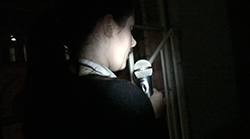
A girl in school uniform is walking down the dark hallway, talking to the microphone. As she repeatedly speaks to the microphone, she takes a slice of bread and leaves a trail of breadcrumbs. She wanders around the empty building until her journey ends on top of the staircase, suggesting her upcoming suicide. What she says is the most frequently used expression in the last notes from teenagers who committed suicide. Any private or personal story obtains a different level of significance or meaning, as it is filtered through the frame of mass media and shown to the public. The delicate and indefinable inner layer vanishes, and only the superficial spectacles are left. In this short film, the most private and desperate message becomes banal and clichéd, filtered and amplified by the means of microphone. Her voice echoes in the empty, labyrinth-like space, which mirrors her mental state. The trace she marks with breadcrumbs suggests her way of no return.
13. Sergey Sonin, Elena Samorodova, Dmitry Khvorostov, Egyptian Troop, Russia, 20:38, 2012
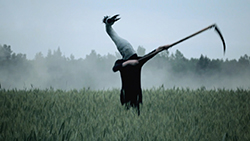
An epigraph to "The Egyptian flock" project could be a phrase of Nikolai Kryuchkov from "Above the Tisza" movie: "I’ve been to Zarechie, talked there with shepherds, they say they’ve seen a dog-head in the woods last night". Sergey Sonin and Elena Samorodova have always had an interest for masks culture, and couple of years ago they began to make masks of (as they call it) "the national-romantic mythological hallucinosis" protagonists, in few words — live totems. They attempt to show their environment, borders and boundary stones. (Marking the territory is natural for animals, while therianthrope denotes his area by lines and cuts).
14. Ira Tsykhanskaya, New Moscow, Russia, 2:00, 2013
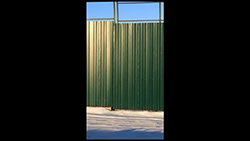
Commuting constructs its own relationship with time and space. For instance, travelling by car creates an artificial exclusion zone, where the issue of absence and presence in time and space is being fixed by the route and the number of hours spent on the road. But the eye, accustomed to the Russian vast space, while searching for the horizon bumps into the vertical of fences, infinitely extended in the territory of New Moscow and forming the main part of the automotive landscape. Enclosed cottages, covering the territory of New Moscow like sores, with their own infrastructure, from kindergarten to the church, resemble a medieval fortresses. In attempt to capture the formation of a new type of space, tending to the formation of the medieval fortresses, my psycho-geographic routes were leaded by the rhythm of fences' verticals, hovering between the cottage communities names, creating a new pseudo-urban landscape.
15. YunTing Tsai, Body of Knowledge, Taiwan, 1:00, 2012
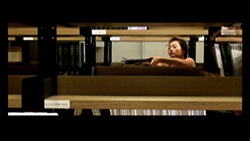
In my experience, almost everyone who grows up in Asia, especially in Taiwan, is under academic pressure. There is keen competition surrounding academic performance. We are expected to go to the library, study and research, gather knowledge and obtain higher educational degrees over taking part in regular physical exercise. Body of Knowledge can be seen as mimic ontology for this observation, or, otherwise described, a playful study through its representation in dance of the phenomenon of competitive pursuit of knowledge and its relation to the underlying principles of human experience.
16. Alexander Yeltsin, Boiling Point, Ukraine, 3:50, 2014
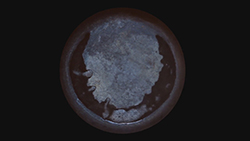
The “Boiling point” refers to the history of Earth origins and formation and to the current geopolitical processes.
Jury
1. Natalia Fuchs, Russia, curator of «Polytech.Science.Art» program of the Polytechnic Museum. Fine art expert and management specialist in the field of culture.
2. Antonuo Geusa, Russia-Italy, independent curator, PhD on media art.
3. Alexey Kurkov, Russia, architect, director of the Center of Contemporary Architecture.
4. Elena Lysakova, Russia, director, head of Photo and Video Documentation department of the Schusev State Museum of Architecture.
5. Alexander Ponomarev, Russia, artist, engineer, corresponding member of Russian Academy of Arts, “Officier des Arts et des Lettres” awarded by the French Ministry of Culture.
6. Clemens Wilhelm, Germany, multimedia artist based in Berlin. Founder of the video art festivals Greener on the Other Side (2011) и I See Video Art Festival (2013).
Gallery |





Copyright (c) Now&After. International Video Art Festival in Moscow |
.jpg)
.jpg)
.jpg)
.jpg)
.jpg)
.jpg)
.jpg)